Sakila——MySQL样例数据库解析(已经迁移)
一、Introduction
Sakila可以作为数据库设计的参考,也可作为实验数据。我是用作数据仓库和ODI学习的实验数据。
The Sakila sample database was developed by Mike Hillyer, a former member of the MySQL AB documentation team, and is intended to provide a standard schema that can be used for examples in books, tutorials, articles, samples, and so forth. Sakila sample database also serves to highlight the latest features of MySQL such as Views, Stored Procedures, and Triggers.
二、Installation
方法一:安装MySQL时选择 FULL 完全安装
安装MySQL时选择FULL 完全安装, 默认安装了Sakila sample database
方法二:下载后导入
The Sakila sample database is available from http://dev.mysql.com/doc/index-other.html. A downloadable archive is available in compressed file or Zip format. The archive contains three files: sakila-schema.sql, sakila-data.sql, and sakila.mwb.
The sakila-schema.sql file contains all the CREATE statements required to create the structure of the Sakila database including tables, views, stored procedures, and triggers.
The sakila-data.sql file contains the INSERT statements required to populate the structure created by the sakila-schema.sql file, along with definitions for triggers that must be created after the initial data load.
The sakila.mwb file is a MySQL Workbench data model that you can open within MySQL Workbench to examine the database structure. For more information, see MySQL Workbench.
下载地址:
ZIP格式:http://downloads.mysql.com/docs/sakila-db.zip
tar格式 http://downloads.mysql.com/docs/sakila-db.tar.gz
官方文档 http://dev.mysql.com/doc/sakila/en/index.html
解压后得到三个文件:
1. sakila-schema.sql 文件包含创建Sakila数据库的结构:表、视图、存储过程和触发器
2. sakila-data.sql文件包含:使用 INSERT语句填充数据及在初始数据加载后,必须创建的触发器的定义
3. sakila.mwb文件是一个MySQL Workbench数据模型,可以在MySQL的工作台打开查看数据库结构。
导入参考: http://dev.mysql.com/doc/sakila/en/sakila-installation.html
shell> mysql -u root -p
mysql> SOURCE C:/temp/sakila-db/sakila-schema.sql;
mysql> SOURCE C:/temp/sakila-db/sakila-data.sql;
查看导入结果
三、Structure
Sakila样例数据库包括16张表格,7个视图,3个Stored Procedures,3个Functions,6个Triggers。英文描述点开相应连接即可查看。
全图:
Customer Data 和 Business Data
Inventory Data
3.1 Tables
3.1.3. The category Table 电影类别表
3.1.8. The film_actor Table 电影和演员中间对应表
3.1.9. The film_category Table 电影和类别的中间对应表
3.1.10. The film_text Table 只包含title和description两列的电影表子表,用以快速检索
3.1.11. The inventory Table 库存表
3.1.12. The language Table 语言表
3.1.15. The staff Table 工作人员表
【01 演员表 actor】
演员表列出了所有演员的信息。演员表和电影表之间是多对多的关系,通过film_actor表建立关系
|
1 2 3 4 |
actor_id: 代理主键用于唯一标识表中的每个演员 first_name: 演员的名字 last_name: 演员的姓氏 last_update: 该行已创建或最近更新的时间 |
【02 地址表 address】
地址表包含客户、员工和商店的地址信息。地址表的主键出现在顾客、 员工、和存储表的外键 。
|
1 2 3 4 5 6 7 8 |
address_id: 代理主键用于唯一标识表中的每个地址 address: 地址的第一行 address2: 一个可选的第二行地址 district: 该地区的所属地区,这可以是国家,省,县等 city_id: 指向城市表的外键 postal_code: 邮政编码 phone: 地址的电话号码 last_update: 该行已创建或最近更新的时间 |
【03 分类表 category】
类别表列出了可以分配到一个电影类别。分类和电影是多对多的关系,通过表film_category建立关系
|
1 2 3 |
category_id: 代理主键用于唯一标识表中的每个类别 name: 类别名称 last_update: 该行已创建或最近更新的时间 |
【04 城市表 city】
城市表包含的城市名单。城市表使用外键来标示国家;在地址表中被作为外键来使用。
|
1 2 3 4 |
city_id: 代理主键用于唯一标识表中的每个城市 city: 城市的名字 country_id: 外键,用于标示城市所属的国家 last_update: 该行已创建或最近更新的时间 |
【05 国家表 country】
国家表中包含的国家名单。国家表是指在城市表的外键 。
|
1 2 3 |
country_id: 代理主键用于唯一标识表中的每个国家 country: 国家的名称 last_update: 该行已创建或最近更新的时间 |
【06 客户表 customer】
客户表包含了所有客户的列表 。 客户表在支付表和租金表被作为外键使用;客户表使用外键来表示地址和存储。
|
1 2 3 4 5 6 7 8 9 |
customer_id: 代理主键用于唯一标识表中的每个客户 store_id: 一个外键,确定客户所属的store。 first_name: 客户的名字 last_name: 客户的姓氏 email: 客户的电子邮件地址 address_id: 使用在地址 表的外键来确定客户的地址 active: 表示客户是否是活跃的客户 create_date: 顾客被添加到系统中的日期。使用 INSERT 触发器自动设置。 last_update: 该行已创建或最近更新的时间 |
说明:
active: 此设置为“ FALSE“作为替代客户彻底删除。大多数查询应该有一个 WHERE active = TRUE 字句。
store_id: 此处的客户不仅限于只由这家商店出租,而是包括客户常常去逛的商店
【07 电影表 film】
电影表是一个可能在商店库存的所有影片名单。每部影片的拷贝的实际库存信息保存在库存表。电影表指使用外键来标示语言表;在film_category、film_actor和库存表中作为外键使用。
|
1 2 3 4 5 6 7 8 9 10 11 12 13 |
film_id: 代理主键用于唯一标识表中的每个电影 title: 影片的标题 description: 一个简短的描述或电影的情节摘要 release_year: 电影发行的年份 language_id: 使用外键来标示语言 original_language_id: 电影的原始语音。使用外键来标示语言 rental_duration: 租赁期限的长短,以天作为单位 rental_rate: 指定的期限内电影的租金 length: 影片的长度,以分钟为单位。 replacement_cost: 如果电影未被归还或损坏状态向客户收取的款项 rating: 分配给电影评级。可以是 G, PG,PG - 13 , R 或NC - 17 special_features: 包括DVD上常见的特殊功能的列表 last_update: 该行已创建或最近更新的时间 |
特殊功能包括零个或多个拖车、评论、删剪片段、幕后。
【08 film_actor表】
film_actor表是用来支持许多电影和演员之间的多对多关系 。对于每一个给定的电影演员,将有film_actor表中列出的演员和电影中的一个行 。
film_actor表指的是使用外键的电影和演员表。
|
1 2 3 |
actor_id: 用于识别演员的外键 film_id: 用于识别电影的外键 last_update: 该行已创建或最近更新的时间 |
【09 film_category表】
film_category表是用来支持许多电影和类别之间的多对多关系 。应用于电影的每个类别中,将有film_category表中列出的类别和电影中的一个行。
film_category表是指使用外键 的 电影 和类别表 。
|
1 2 3 |
film_id: 用于识别电影的外键 category_id: 用于识别类别的外键 last_update: 该行已创建或最近更新的时间 |
【10 film_text表】
film_text表是Sakila样例数据库唯一使用MyISAM存储引擎的表。MyISAM类型不支持事务处理等高级处理,而InnoDB类型支持。MyISAM类型的表强调的是性能,其执行数度比InnoDB类型更快。此表提供允许全文搜索电影表中列出的影片的标题和描述。film_text表包含的film_id,标题和描述的列电影表,保存的内容与电影表上的内容同步(指电影表的插入、更新和删除操作)
|
1 2 3 |
film_id: 代理主键用于唯一标识表中的每个电影 title: 影片的标题 description: 一个简短的描述或电影的情节摘要 |
注意:film_text表的内容不应该直接修改。所有的变更来自于电影表 。
【11 库存表 inventory】
库存表的一行为存放在一个给定的商店里的一个给定的电影的copy副本。库存表是使用外键来识别电影和存储;在出租表中使用外键来识别库存。
|
1 2 3 4 |
inventory_id: 理主键用于唯一标识每个项目在库存 film_id: 使用外键来识别电影 store_id: 使用外键来识别物品所在的商店 last_update: 该行已创建或最近更新的时间 |
【12 语言表 language】
语言表是一个查找表,列出可能使用的语言,电影可以有自己的语言和原始语言值 。
语言表在电压表中被作为外键来使用。
|
1 2 3 |
language_id: 代理主键用于唯一标识每一种语言 name: 语言的英文名称 last_update: 该行已创建或最近更新的时间 |
【13 付款表 payment】
付款表记录每个客户的付款,如支付的金额和租金的资料。
付款表使用外键来表示客户、出租、和工作人员。
|
1 2 3 4 5 6 7 |
payment_id: 代理主键用于唯一标识每个付款 customer_id: 使用外键来标识付款的客户 staff_id: 工作人员,负责处理支付 。使用外键来标识 rental_id: 租借ID, 外键,参照rental表 amount: 付款金额 payment_date: 处理付款的日期 last_update: 该行已创建或最近更新的时间 |
【14 租金表 rental】
租借表的一行表示每个inventory的租借客户、租借时间、归还时间
租借表是使用外键来标识库存 ,顾客 和工作人员;在支付表中使用了外键来标识租金 。
|
1 2 3 4 5 6 7 |
rental_id: 代理主键唯一标识的租金 rental_date: 该项目租用的日期和时间 inventory_id: 该项目被租用 customer_id: 租用该项目的客户 return_date: 归还日期 staff_id: 处理该项业务的工作人员 last_update: 该行已创建或最近更新的时间 |
【15 工作人员表 staff】
工作人员表列出了所有的工作人员,包括电子邮件地址,登录信息和图片信息 。
工作人员表是指使用外键来标识存储和地址表;在出租、支付和商店表中作为外键。
|
1 2 3 4 5 6 7 8 9 10 11 12 |
staff_id: 代理主键唯一标识的工作人员 first_name: 工作人员的名字 last_name: 工作人员的姓氏 address_id: 工作人员的地址在地址表的外键 picture: 工作人员的照片,使用了 BLOB属性 email: 工作人员的电子邮件地址 store_id: 工作人员所在的商店,用外键标识 active: 是否是活跃的工作人员。 username: 用户名,由工作人员用来访问租赁系统 password: 工作人员访问租赁系统所使用的密码。使用了 SHA1 函数 last_update: 该行已创建或最近更新的时间 active: 是否有效,删除时设置为False |
【16 商店表 store】
store表列出了系统中的所有商店 。
store使用外键来标识工作人员和地址;在员工、客户、库存表被作为外键使用。
|
1 2 3 4 |
store_id: 代理主键唯一标识的商店 manager_staff_id: 使用外键来标识这家商店的经理 address_id: 使用外键来确定这家店的地址 last_update: 该行已创建或最近更新的时间 |
3.2 Views
actor_info 视图提供了所有演员的列表及所演的电影, 电影按category分组.
actor → film_actor → film → film_category → category
SELECT a.actor_id, a.first_name, a.last_name, GROUP_CONCAT(DISTINCT CONCAT(c.name, ': ', (SELECT GROUP_CONCAT(f.title ORDER BY f.title SEPARATOR ', ') FROM sakila.film f INNER JOIN sakila.film_category fc ON f.film_id = fc.film_id INNER JOIN sakila.film_actor fa ON f.film_id = fa.film_id WHERE fc.category_id = c.category_id AND fa.actor_id = a.actor_id ) ) ORDER BY c.name SEPARATOR '; ') AS film_info FROM sakila.actor a LEFT JOIN sakila.film_actor fa ON a.actor_id = fa.actor_id LEFT JOIN sakila.film_category fc ON fa.film_id = fc.film_id LEFT JOIN sakila.category c ON fc.category_id = c.category_id GROUP BY a.actor_id, a.first_name, a.last_name
客户列表,firstname和lastname连接成fullname,将 address, city, country 集成在一个视图里
customer → address → city → country
SELECT cu.customer_id AS ID, CONCAT( cu.first_name, _utf8 ' ', cu.last_name ) AS NAME, a.address AS address, a.postal_code AS `zip code`, a.phone AS phone, city.city AS city, country.country AS country, IF ( cu.active, _utf8 'active', _utf8 '' ) AS notes, cu.store_id AS SID FROM customer AS cu JOIN address AS a ON cu.address_id = a.address_id JOIN city ON a.city_id = city.city_id JOIN country ON city.country_id = country.country_id
电影列表视图,包含了每一部电影的信息及电影所对应的演员。电影对应的演员以逗号作为分隔符。连接了 film, film_category, category, and film_actoractor 表的数据
SELECT film.film_id AS FID, film.title AS title, film.description AS description, category. NAME AS category, film.rental_rate AS price, film.length AS length, film.rating AS rating, GROUP_CONCAT( CONCAT( actor.first_name, _utf8 ' ', actor.last_name ) SEPARATOR ', ' ) AS actors FROM category LEFT JOIN film_category ON category.category_id = film_category.category_id LEFT JOIN film ON film_category.film_id = film.film_id JOIN film_actor ON film.film_id = film_actor.film_id JOIN actor ON film_actor.actor_id = actor.actor_id GROUP BY film.film_id
3.2.4. The nicer_but_slower_film_list View
电影列表视图,包含了每一部电影的信息及电影所对应的演员。电影对应的演员以逗号作为分隔符。连接了 film, film_category, category, and film_actoractor 表的数据。和The film_list View不同,演员名字只有单词首字母大写了。
SELECT film.film_id AS FID, film.title AS title, film.description AS description, category. NAME AS category, film.rental_rate AS price, film.length AS length, film.rating AS rating, GROUP_CONCAT( CONCAT( CONCAT( UCASE( SUBSTR(actor.first_name, 1, 1) ), LCASE( SUBSTR( actor.first_name, 2, LENGTH(actor.first_name) ) ), _utf8 ' ', CONCAT( UCASE( SUBSTR(actor.last_name, 1, 1) ), LCASE( SUBSTR( actor.last_name, 2, LENGTH(actor.last_name) ) ) ) ) ) SEPARATOR ', ' ) AS actors FROM category LEFT JOIN film_category ON category.category_id = film_category.category_id LEFT JOIN film ON film_category.film_id = film.film_id JOIN film_actor ON film.film_id = film_actor.film_id JOIN actor ON film_actor.actor_id = actor.actor_id GROUP BY film.film_id
3.2.5. The sales_by_film_category View
每个电影种类的销售额 , payment → rental → inventory → film → film_category → category
SELECT c.name AS category , SUM(p.amount) AS total_sales FROM payment AS p INNER JOIN rental AS r ON p.rental_id = r.rental_id INNER JOIN inventory AS i ON r.inventory_id = i.inventory_id INNER JOIN film AS f ON i.film_id = f.film_id INNER JOIN film_category AS fc ON f.film_id = fc.film_id INNER JOIN category AS c ON fc.category_id = c.category_id GROUP BY c.name ORDER BY total_sales DESC
3.2.6. The sales_by_store View
每个商店的manager及销售额。
payment → rental → inventory → store → staff
SELECT CONCAT(c.city, _utf8',', cy.country) AS store , CONCAT(m.first_name, _utf8' ', m.last_name) AS manager , SUM(p.amount) AS total_sales FROM payment AS p INNER JOIN rental AS r ON p.rental_id = r.rental_id INNER JOIN inventory AS i ON r.inventory_id = i.inventory_id INNER JOIN store AS s ON i.store_id = s.store_id INNER JOIN address AS a ON s.address_id = a.address_id INNER JOIN city AS c ON a.city_id = c.city_id INNER JOIN country AS cy ON c.country_id = cy.country_id INNER JOIN staff AS m ON s.manager_staff_id = m.staff_id GROUP BY s.store_id ORDER BY cy.country, c.city
工作人员的列表
SELECT s.staff_id AS ID, CONCAT( s.first_name, _utf8 ' ', s.last_name ) AS NAME, a.address AS address, a.postal_code AS `zip code`, a.phone AS phone, city.city AS city, country.country AS country, s.store_id AS SID FROM staff AS s JOIN address AS a ON s.address_id = a.address_id JOIN city ON a.city_id = city.city_id JOIN country ON city.country_id = country.country_id
3.3 Stored Procedures
3.3.1. The film_in_stock Stored Procedure
Description
The
film_in_stockstored procedure is used to determine whether any copies of a given film are in stock at a given store.判断在一个给定的商店里是否有一个给定电影的copy.
Parameters
p_film_id: The ID of the film to be checked, from thefilm_idcolumn of thefilmtable.
p_store_id: The ID of the store to check for, from thestore_idcolumn of thestoretable.
p_film_count: AnOUTparameter that returns a count of the copies of the film in stock.Return Values
This procedure produces a table of inventory ID numbers for the copies of the film in stock, and returns (in the
p_film_countparameter) a count that indicates the number of rows in that table.
BEGIN SELECT inventory_id FROM inventory WHERE film_id = p_film_id AND store_id = p_store_id AND inventory_in_stock(inventory_id); SELECT FOUND_ROWS() INTO p_film_count; END
3.3.2. The film_not_in_stock Stored Procedure
和The film_in_stock Stored Procedure相反,判断给定的电影,是否有copy,不在一个给定的商店
Description
The
film_not_in_stockstored procedure is used to determine whether there are any copies of a given film not in stock (rented out) at a given store.Parameters
p_film_id: The ID of the film to be checked, from thefilm_idcolumn of thefilmtable.
p_store_id: The ID of the store to check for, from thestore_idcolumn of thestoretable.
p_film_count: AnOUTparameter that returns a count of the copies of the film not in stock.Return Values
This procedure produces a table of inventory ID numbers for the copies of the film not in stock, and returns (in the
p_film_countparameter) a count that indicates the number of rows in that table.
BEGIN SELECT inventory_id FROM inventory WHERE film_id = p_film_id AND store_id = p_store_id AND NOT inventory_in_stock(inventory_id); SELECT FOUND_ROWS() INTO p_film_count; END
3.3.3. The rewards_report Stored Procedure
过去一个月,数量大于输入参数min_monthly_purchases ,消费金额大于输入参数min_dollar_amount_purchased的客户
Description
The
rewards_reportstored procedure generates a customizable list of the top customers for the previous month.Parameters
min_monthly_purchases: The minimum number of purchases or rentals a customer needed to make in the last month to qualify.
min_dollar_amount_purchased: The minimum dollar amount a customer needed to spend in the last month to qualify.
count_rewardees: AnOUTparameter that returns a count of the customers who met the qualifications specified.Return Values
This function returns a table of customers who met the qualifications specified. The table has the same structure as the
customertable. The procedure also returns (in thecount_rewardeesparameter) a count that indicates the number of rows in that table.Stop Service net stop uxsms
Start Service net start uxsms
Disable Service sc config uxsms start= disabled
Enable Service sc config uxsms start= auto
proc: BEGIN DECLARE last_month_start DATE; DECLARE last_month_end DATE; /* Some sanity checks... */ IF min_monthly_purchases = 0 THEN SELECT 'Minimum monthly purchases parameter must be > 0'; LEAVE proc; END IF; IF min_dollar_amount_purchased = 0.00 THEN SELECT 'Minimum monthly dollar amount purchased parameter must be > $0.00'; LEAVE proc; END IF; /* Determine start and end time periods */ SET last_month_start = DATE_SUB(CURRENT_DATE(), INTERVAL 1 MONTH); SET last_month_start = STR_TO_DATE(CONCAT(YEAR(last_month_start),'-',MONTH(last_month_start),'-01'),'%Y-%m-%d'); SET last_month_end = LAST_DAY(last_month_start); /* Create a temporary storage area for Customer IDs. */ CREATE TEMPORARY TABLE tmpCustomer (customer_id SMALLINT UNSIGNED NOT NULL PRIMARY KEY); /* Find all customers meeting the monthly purchase requirements */ INSERT INTO tmpCustomer (customer_id) SELECT p.customer_id FROM payment AS p WHERE DATE(p.payment_date) BETWEEN last_month_start AND last_month_end GROUP BY customer_id HAVING SUM(p.amount) > min_dollar_amount_purchased AND COUNT(customer_id) > min_monthly_purchases; /* Populate OUT parameter with count of found customers */ SELECT COUNT(*) FROM tmpCustomer INTO count_rewardees; /* Output ALL customer information of matching rewardees. Customize output as needed. */ SELECT c.* FROM tmpCustomer AS t INNER JOIN customer AS c ON t.customer_id = c.customer_id; /* Clean up */ DROP TABLE tmpCustomer; END
因为不满足系统时间,所以结果为0
3.4 Stored Functions
3.4.1. The get_customer_balance Function
返回指定客户到某一个日期欠的钱。 所有的rental_rate +超期费用 - 所有的payment
Description
The
get_customer_balancefunction returns the current amount owing on a specified customer's account.Parameters
p_customer_id: The ID of the customer to check, from thecustomer_idcolumn of thecustomertable.
p_effective_date: The cutoff date for items that will be applied to the balance. Any rentals, payments, and so forth after this date are not counted.Return Values
This function returns the amount owing on the customer's account.
BEGIN #OK, WE NEED TO CALCULATE THE CURRENT BALANCE GIVEN A CUSTOMER_ID AND A DATE #THAT WE WANT THE BALANCE TO BE EFFECTIVE FOR. THE BALANCE IS: # 1) RENTAL FEES FOR ALL PREVIOUS RENTALS # 2) ONE DOLLAR FOR EVERY DAY THE PREVIOUS RENTALS ARE OVERDUE # 3) IF A FILM IS MORE THAN RENTAL_DURATION * 2 OVERDUE, CHARGE THE REPLACEMENT_COST # 4) SUBTRACT ALL PAYMENTS MADE BEFORE THE DATE SPECIFIED DECLARE v_rentfees DECIMAL(5,2); #FEES PAID TO RENT THE VIDEOS INITIALLY DECLARE v_overfees INTEGER; #LATE FEES FOR PRIOR RENTALS DECLARE v_payments DECIMAL(5,2); #SUM OF PAYMENTS MADE PREVIOUSLY SELECT IFNULL(SUM(film.rental_rate),0) INTO v_rentfees FROM film, inventory, rental WHERE film.film_id = inventory.film_id AND inventory.inventory_id = rental.inventory_id AND rental.rental_date <= p_effective_date AND rental.customer_id = p_customer_id; SELECT IFNULL(SUM(IF((TO_DAYS(rental.return_date) - TO_DAYS(rental.rental_date)) > film.rental_duration, ((TO_DAYS(rental.return_date) - TO_DAYS(rental.rental_date)) - film.rental_duration),0)),0) INTO v_overfees FROM rental, inventory, film WHERE film.film_id = inventory.film_id AND inventory.inventory_id = rental.inventory_id AND rental.rental_date <= p_effective_date AND rental.customer_id = p_customer_id; SELECT IFNULL(SUM(payment.amount),0) INTO v_payments FROM payment WHERE payment.payment_date <= p_effective_date AND payment.customer_id = p_customer_id; RETURN v_rentfees + v_overfees - v_payments; END
3.4.2. The inventory_held_by_customer Function
返回指定的inventory现在在那个客户的customer_id
The
inventory_held_by_customerfunction returns thecustomer_idof the customer who has rented out the specified inventory item.Parameters
p_inventory_id: The ID of the inventory item to be checked.Return Values
This function returns the
customer_idof the customer who is currently renting the item, orNULLif the item is in stock.
BEGIN DECLARE v_customer_id INT; DECLARE EXIT HANDLER FOR NOT FOUND RETURN NULL; SELECT customer_id INTO v_customer_id FROM rental WHERE return_date IS NULL AND inventory_id = p_inventory_id; RETURN v_customer_id; END
3.4.3. The inventory_in_stock Function
返回指定的inventory是否在商店里
The
inventory_in stock functionreturns a boolean value indicating whether the inventory item specified is in stock.Parameters
p_inventory_id: The ID of the inventory item to be checked.Return Values
This function returns
TRUEorFALSEto indicate whether the item specified is in stock.
BEGIN DECLARE v_rentals INT; DECLARE v_out INT; #AN ITEM IS IN-STOCK IF THERE ARE EITHER NO ROWS IN THE rental TABLE #FOR THE ITEM OR ALL ROWS HAVE return_date POPULATED SELECT COUNT(*) INTO v_rentals FROM rental WHERE inventory_id = p_inventory_id; IF v_rentals = 0 THEN RETURN TRUE; END IF; SELECT COUNT(rental_id) INTO v_out FROM inventory LEFT JOIN rental USING(inventory_id) WHERE inventory.inventory_id = p_inventory_id AND rental.return_date IS NULL; IF v_out > 0 THEN RETURN FALSE; ELSE RETURN TRUE; END IF; END
3.5 Triggers
3.5.1. The customer_create_date Trigger
插入新客户时,设置create_date为当前日期
-- Trigger to enforce create dates on INSERT CREATE TRIGGER customer_create_date BEFORE INSERT ON customer FOR EACH ROW SET NEW.create_date = NOW();
3.5.2. The payment_date Trigger
payment新增记录时,payment_date设置为当前日期
-- Trigger to enforce payment_date during INSERT CREATE TRIGGER payment_date BEFORE INSERT ON payment FOR EACH ROW SET NEW.payment_date = NOW();
3.5.3. The rental_date Trigger
rental表新增记录时,rental_date设置为当前日期
-- Trigger to enforce rental_date on INSERT CREATE TRIGGER rental_date BEFORE INSERT ON rental FOR EACH ROW SET NEW.rental_date = NOW();
确保 film_text 和 film同步插入
CREATE TRIGGER `ins_film` AFTER INSERT ON `film` FOR EACH ROW BEGIN INSERT INTO film_text (film_id, title, description) VALUES (new.film_id, new.title, new.description); END;;
确保 film_text 和 film同步更新
CREATE TRIGGER `upd_film` AFTER UPDATE ON `film` FOR EACH ROW BEGIN IF (old.title != new.title) OR (old.description != new.description) OR (old.film_id != new.film_id) THEN UPDATE film_text SET title=new.title, description=new.description, film_id=new.film_id WHERE film_id=old.film_id; END IF; END;;
确保 film_text 和 film同步删除
CREATE TRIGGER `del_film` AFTER DELETE ON `film` FOR EACH ROW BEGIN DELETE FROM film_text WHERE film_id = old.film_id; END;;
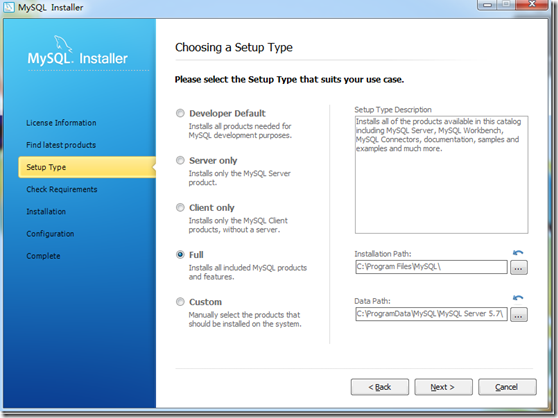
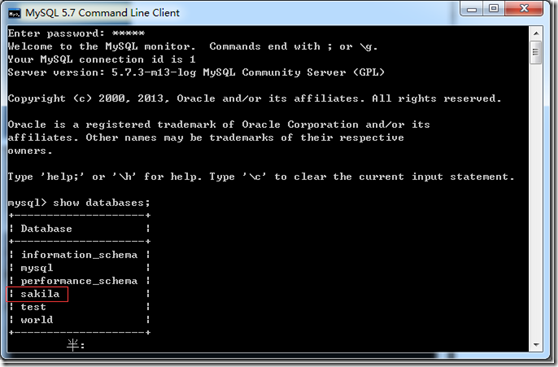
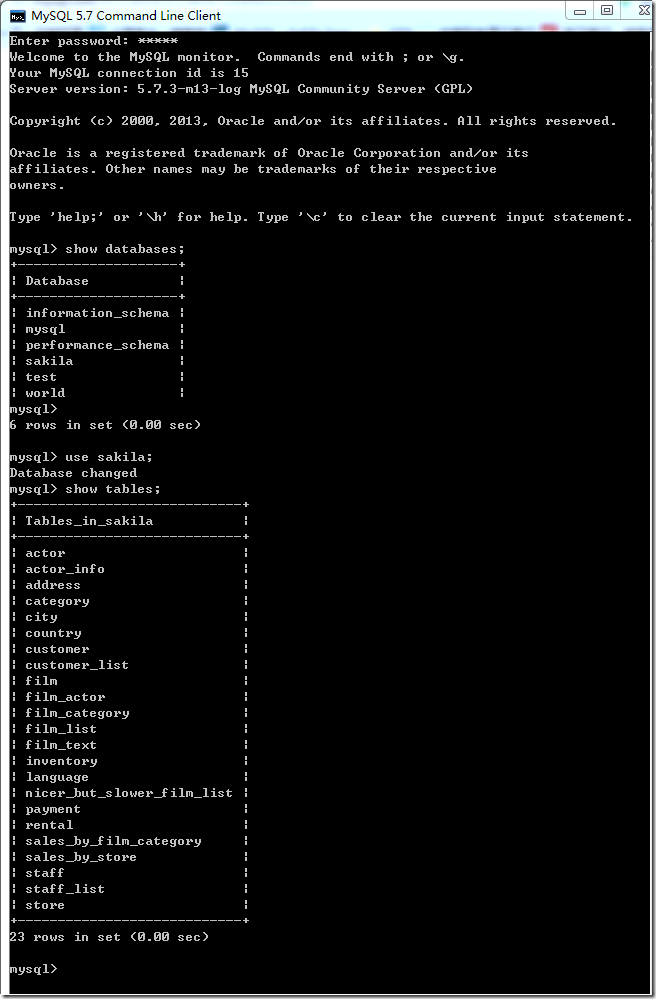
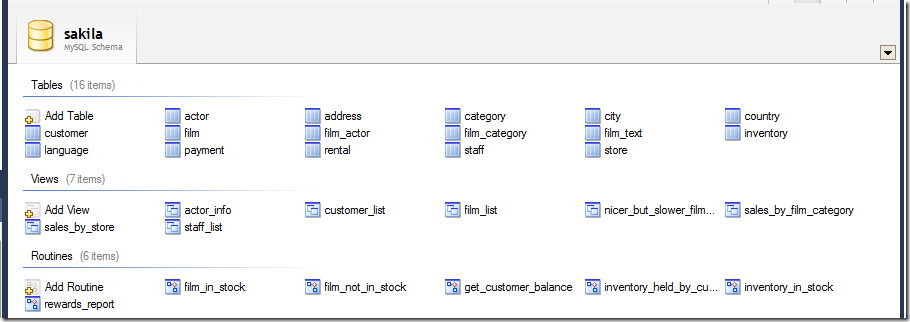



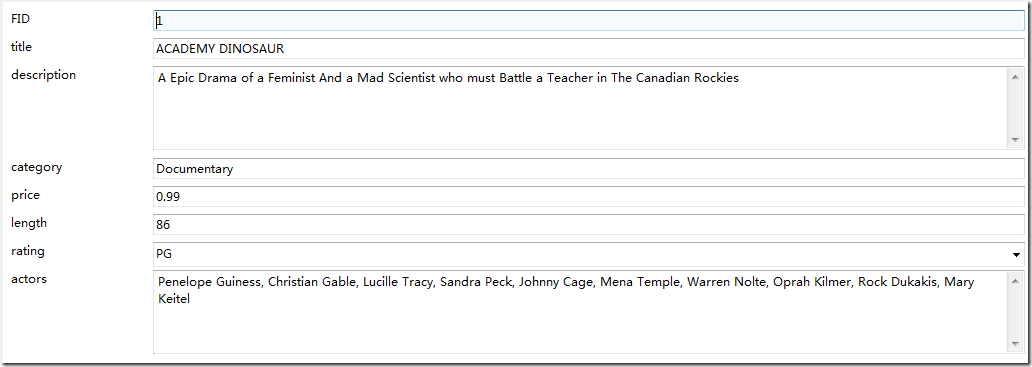




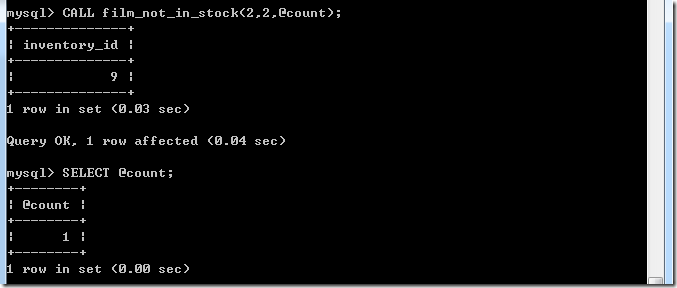




 浙公网安备 33010602011771号
浙公网安备 33010602011771号